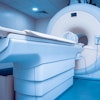MRI scans have linked repeated blows to the head from serial boxing or martial arts to smaller volumes in certain brain regions and slower processing speeds, according to a study published online January 29 in the British Journal of Sports Medicine.
Researchers from the Cleveland Clinic analyzed MR images of 131 mixed martial arts fighters and 93 boxers (ages 18 to 44 years) who participated in the Professional Fighters Brain Health Study (PFBHS). They were matched them for age and education to 22 normal people with no history of head trauma.
The experience of the professional fighters ranged from 0 to 24 years, with an overall average of four years. Their total number of professional matches ranged from 0 to 101, with an average of 10 bouts per year.
Subjects underwent an MRI scan to assess brain volume at the start of the study and then annually for the next four years. They also were tested for verbal memory, processing speed, motor skills, and reaction times to measure their brainpower.
Researchers also calculated the Fight Exposure Score (FES), which combined duration and intensity of the fighters' careers. A higher score correlated with smaller brain volume, particularly in the thalamus and caudate.
The researchers found that each increase in FES related to a reduction of 0.8% in both brain regions. In addition, smaller volumes and a higher FES score were associated with slower brain processing speeds, with an estimated 0.19% reduction in processing speed per fight and a 2.1% reduction for each increase in FES.
Fighters with an FES score of 4 were 8.8% slower in processing speed than those with an FES score of 0. Higher FES scores also meant a greater risk of cognitive impairment.


.fFmgij6Hin.png?auto=compress%2Cformat&fit=crop&h=100&q=70&w=100)





.fFmgij6Hin.png?auto=compress%2Cformat&fit=crop&h=167&q=70&w=250)











